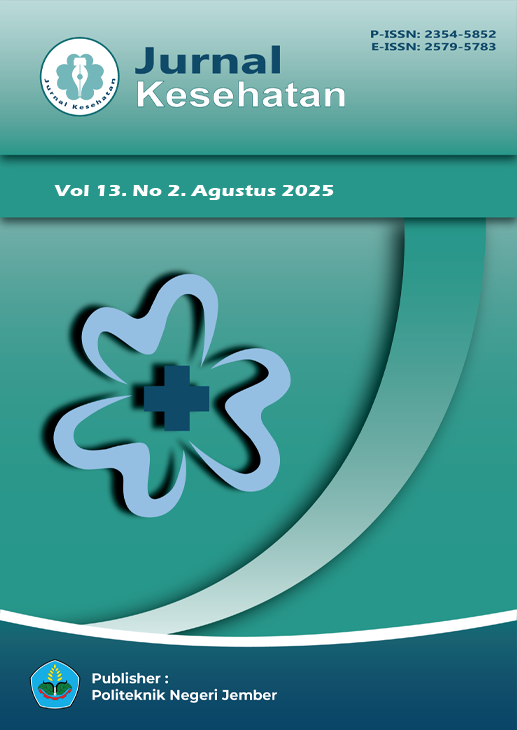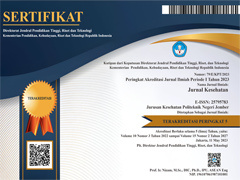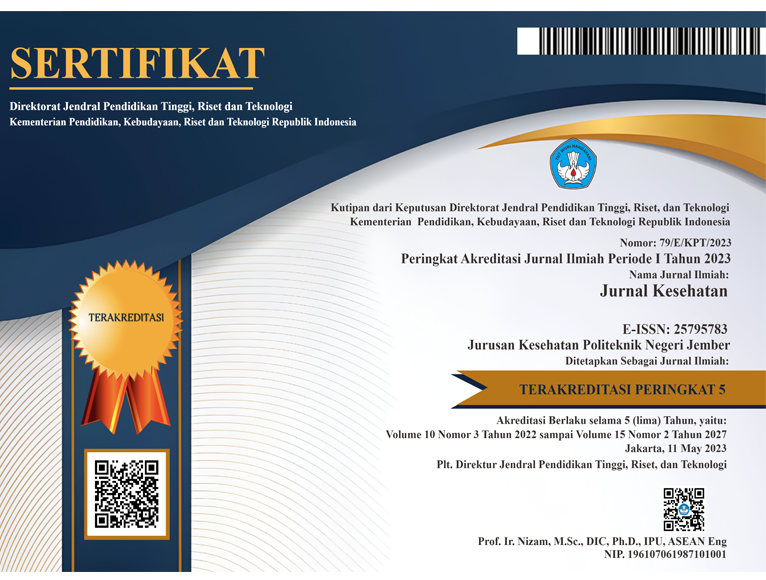Pembuatan Snack Bar Sumber Zat Besi Berbasis Kacang – Kacangan Sebagai Pemberian Makanan Tambahan Balita Stunting
DOI:
10.25047/j-kes.v13i2.606Downloads
Abstract
Stunting remains a significant public health concern in Indonesia, with a prevalence of 21.6% reported in 2022, largely attributed to prolonged inadequate intake of energy and essential nutrients. To address this issue, the Indonesian government has implemented Supplementary Feeding Programs (Pemberian Makanan Tambahan, PMT) as outlined in Ministry of Health Regulation No. 39 of 2016. Legumes, which are naturally rich in iron and protein, offer considerable potential for development into nutrient-dense supplementary foods. This study aimed to formulate and evaluate a legume-based snack bar designed as an iron-rich supplementary food for stunted toddlers. A Completely Randomized Design (CRD) was employed, testing six formulations with varying proportions of peanut flour, soybean flour, and red bean flour (P1–P6) and four replications each. The results demonstrated that the iron content across formulations ranged from 4.0 to 5.6 mg per 100 grams, with no significant differences observed. Among all variations, the P6 formulation (60% peanut flour, 20% soybean flour, 20% red bean flour) was the most preferred based on sensory evaluation, exhibiting a slightly dark brown color, savory taste, mild nutty aroma, and soft texture. Nutritional analysis of the optimal formulation revealed that a 30-gram serving delivered 120 kcal of energy, 6 grams of fat, 2 grams of protein, 14 grams of carbohydrates, and 1.56 mg of iron, aligning with the Indonesian Food and Drug Authority (BPOM RI) standards for iron-rich foods. Furthermore, the snack bar achieved an acceptance rate of 67% among toddlers aged 1–3 years, indicating its potential application in stunting prevention strategies.
Keywords: legumes, iron, snack bar, stunting, supplementary feeding
License
Copyright (c) 2025 Maharani Dewi Safitri, Rindiani .

This work is licensed under a Creative Commons Attribution-ShareAlike 4.0 International License.
Authors who publish in this journal agree to the following terms:
1. Copyright belongs to the medical journal as a publication
2. The author retains copyright and grants the journal rights to the first publication carried out simultaneously under a Creative Commons Attribution License which allows others to share the work with an acknowledgment of the author's work and initial publication in this journal.
3. Authors may enter into separate additional contractual arrangements for the non-exclusive distribution of the work (eg sending it to an institutional repository or publishing it in a book) with acknowledgment of initial publication in this journal.
4. Authors are permitted and encouraged to post work online (eg in institutional repositories or on their websites) before and during the submission process, as before and larger citations of published work (see Effects of Open Access).
Selengkapnya tentang teks sumber ini














